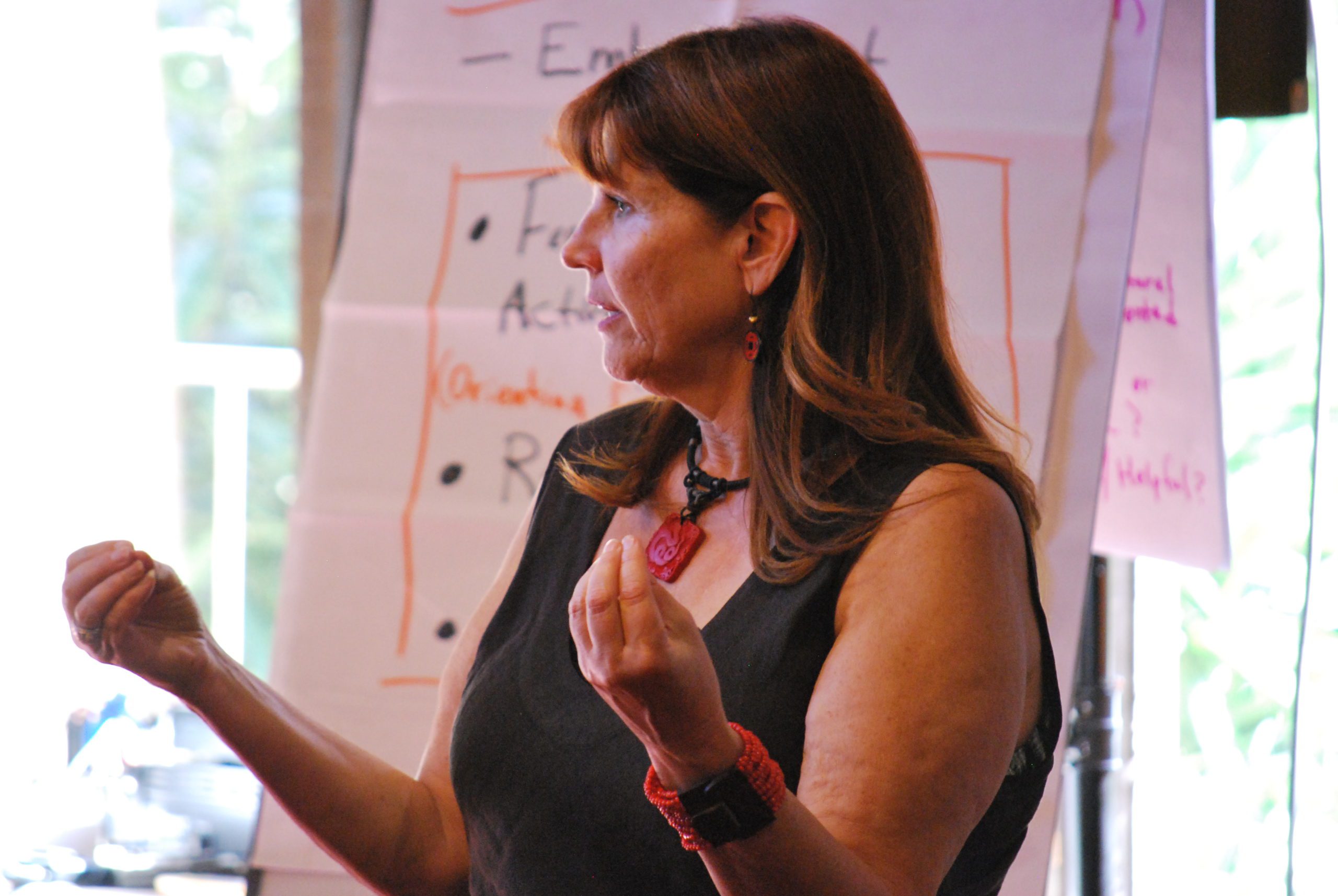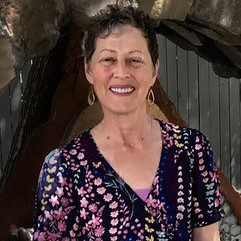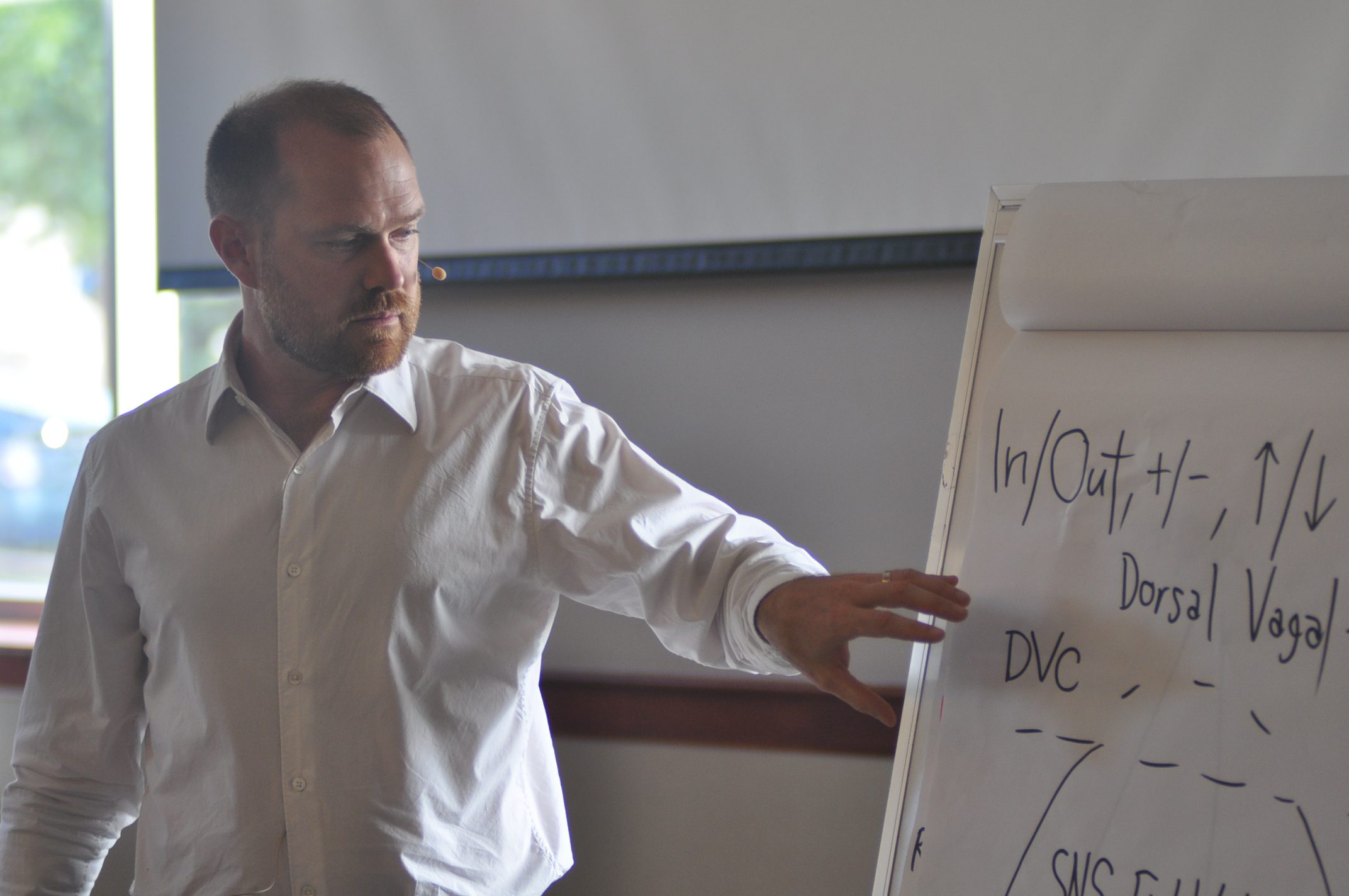SE™ PROFESSIONAL TRAINING PROGRAM
Transform your ability to resolve trauma and chronic stress.
The SE™ Professional Training program is a dynamic continuing education certificate program designed to support you in making a profound difference with those suffering from trauma or chronic stress.
WHY SOMATIC EXPERIENCING®?
The Somatic Experiencing® (“SE™”) Professional Training provides a rich theoretical framework for understanding and addressing trauma physiology.
Our educational model is highly experiential, offering you tangible skills that can be immediately integrated into your professional practice. Learn how SE, a body-oriented approach, is helping tens of thousands of people resolve trauma and other stress responses. The training is delivered through a combination of lectures, live demonstrations, guided practice sessions with fellow students, audio visual case studies, and suggested readings. Because competent practice of SE requires direct clinical experience, as well as a refined somatic awareness and capacity for self-regulation, becoming an SE Practitioner (SEP™) also entails receiving personal SE sessions to deepen your experiential knowledge of SE.
Because SE supports regulation of the autonomic nervous system, which underlies every aspect of our physical, emotional, and psychological functioning, the applications of SE are diverse. For example, by working directly with a client’s physiology, SE enhances the depth, effectiveness, and outcome of psychotherapeutic interventions focused on relational, developmental, and psychodynamic issues. SE supports mood regulation, the reworking of addictive patterns, and the prevention or resolution of PTSD. Since trauma can contribute to the formation of many complex syndromes and diseases, SE aids medical professionals in unwinding challenging medical cases. SE techniques are also effective in reducing or eliminating chronic pain and trauma-related symptoms presenting in the musculoskeletal system, making it useful for bodyworkers and other physical-care providers. Coaches may notice how trauma physiology is interrupting a client's progress toward their life goals.

LEARN SE™ BASIC PRINCIPLES
We recommend all future students take advantage of our 3-hour SE™ Basic Principles course
This course is an opportunity to present a basic theoretical overview of the SE™
model and how it complements and augments traditional approaches to working with
trauma. This introductory workshop is offered in three formats: 3-hour webinar, 3-hour
in person or full day (6-hour) in person.

“I’ve found SE to be the most fundamental work I do with clients. I’m a clinical psychotherapist, dance therapist, Craniosacral therapist, pre and perinatal practitioner and I have two masters degrees. But what SE offered me has worked more than any other skill I’ve been trained in. It’s so basic, intuitively supportive and safe for clients. No matter what happens I know I can resort to slowing down and resourcing . . . SE is wonderful work.”
Nadia Natali – Dance Psychotherapist, SEP, Ojai, CA, USA


Training curriculum & timeline
The Somatic Experiencing® (“SE™”) Professional Training curriculum is delivered through a combination of lecture, demonstration, and guided practice sessions with other students. Course material is taught in 6-8 training modules of 4 to 6 days in length, spaced out over 2½ to 3 years. Training modules may be structured differently in countries outside of the USA. Training modules must be taken in sequence. In exceptional cases, where a student is unable to attend one of the live training modules, we offer supplemental video training modules for our Beginning and Intermediate classes so that students may continue with their local training group (certain restrictions may apply). This timeline supports the integration of the learning, as SE is an embodied approach and requires time between modules to integrate the learning for the practitioner.
Beginning Level
Develop foundational skills in the SE™ biophysiological model for the resolution of trauma. Typically consists of three 4-day live training modules, spaced 2 to 4 months apart.
- Analyze the physiology of traumatic stress and its effect on the autonomic nervous system (ANS)
- Practice the fundamental SE method of tracking sensation to access responses in the ANS
- Assess the neurophysiology of each aspect of the threat response: defensive orientation, fight/flight/freeze, deactivation and completion, and exploratory orienting
- Develop skill in working with the SE model of tracking sensation to support completion of the threat-response cycle and incomplete survival responses
- Demonstrate how to “titrate” (modulate) the SE trauma-renegotiation process to ensure healthy integration of experience
- Begin to integrate Porges' Polyvagal Theory of ANS function
- Explain the SE model of SIBAM (Sensation, Image, Behavior, Affect, Meaning) and its significance in trauma
- Explore coupling dynamics—the over- and under-association of the elements of SIBAM and elements of physiological responses to traumatically-stressing experiences
- Support clients in re-establishing and maintaining healthy boundaries
- Identify, normalize, and stabilize traumatic reactions
- Acquire brief intervention skills that provide long-term solutions to acute and chronic symptoms of trauma
- Explore the integration of SE into ongoing professional practice
- Explore the appropriate use of touch in the context of SE
Intermediate Level
Assess the different categories of trauma as addressed in the SE model. Identify the primary characteristics and hallmarks of each category of trauma, as well as specific approaches and interventions for working with each category effectively. Typically consists of three 4-day live training modules, spaced 2 to 4 months apart.
- Global High Intensity Activation (GHIA): pre- and peri-natal trauma, early trauma, anesthesia, suffocation, choking, drowning
- High Impact/Failure of Physical Defense: falls, traumatic brain injury, motor vehicle accidents, and other high-impact accidents
- Inescapable Attack: assault, animal attack, rape or sexual abuse, inhibited escape
- Physical Injury: surgery, poison, burns, physical injury due to accident
- Natural and Man-Made Disasters, Horror: natural disasters (e.g. earthquake, fires, etc.), war, terrorism, torture, ritual abuse, horror (e.g. witnessing abuse, causing harm to another
- Emotional Trauma: severe neglect, severe loss, ongoing abuse
Advanced Level
Assess how to work with complex trauma and syndromes. Expand on the use of touch in SE practice. Typically consists of two 6-day live training modules, spaced 4 to 6 months apart.
-
- Explain the importance of stabilization when working with complex trauma
- Explore the SE concept of “coherence” in working with complex trauma
- Refine touch skills for supporting containment and coherence
- Explain the interrelationship between dysregulation of the ANS and the SE model of syndromes (non-reciprocal relationship between the sympathetic and parasympathetic nervous systems)
- Analyze the Polyvagal Theory as it relates to working with syndromes
- Refine the necessary SE skills of “titration” and “pendulation” when working with highly sensitive and syndromal clients
- Apply the SE model for working with the eyes
- Develop SE touch-based skills for working with different categories of trauma
- Explain how SE uses joints, body diaphragms, and the viscera to access ANS responses and to support completion of incomplete survival responses
- Explore scope-of-practice issues relating to the integration of SE and SE touch into professional practice
ACHIEVE REAL BREAKTHROUGH FOR YOUR CLIENTS.
LEARN SE™ TODAY
Find the official SE™ Training Institute in your country and start your journey today.

